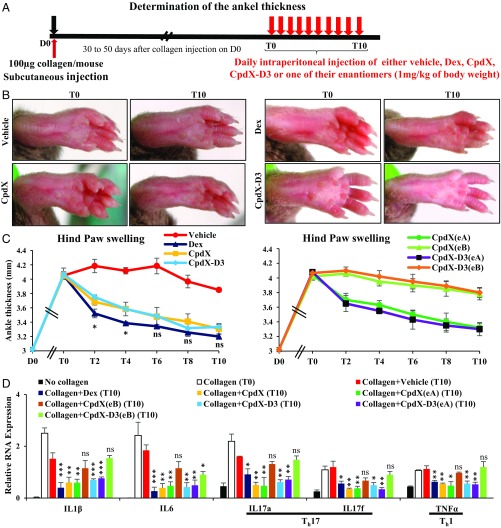Fig. 3.
CpdX, CpdX(eA), CpdX-D3, and CpdX-D3(eA), but not CpdX(eB) or CpdX-D3(eB), are as efficient as Dex at decreasing a CIA Th17 inflammation. (A) Experimental protocol for CIA. (B) Photographs of the hind paws of DBA/1J mice in which a CIA-like inflammation was generated (T0, Left), and then treated for 10 d (T10) by i.p. administration (Right), as indicated. (C) Mouse hind paw swelling as determined with a caliper. Data are represented as mean ± SEM with at least six mice per treatment. Data for Vehicle, Dex, CpdX, and CpdX-D3 treatments (Left) and data for CpdX(eA), CpdX(eB), CpdX-D3(eA), and CpdX-D3(eB) (Right). The statistical significance compared with the Dex treatment was calculated by Student t test. *P < 0.05; “ns” indicates that the differences observed between Dex-treated, CpdX-treated, and CpdX-D3−treated mice are not significant. (D) The qRT-PCR for RNA transcripts of proinflammatory genes in hind paws of mice treated as indicated. Th17- and Th1-specific proinflammatory interleukins are highlighted. Data are represented as mean ± SEM of at least two independent experiments with at least six mice per treatment. The statistical significance compared with the Collagen+Vehicle (T10) treatment was calculated by Student t test; *P < 0.05; **P < 0.01; ***P < 0.001.

